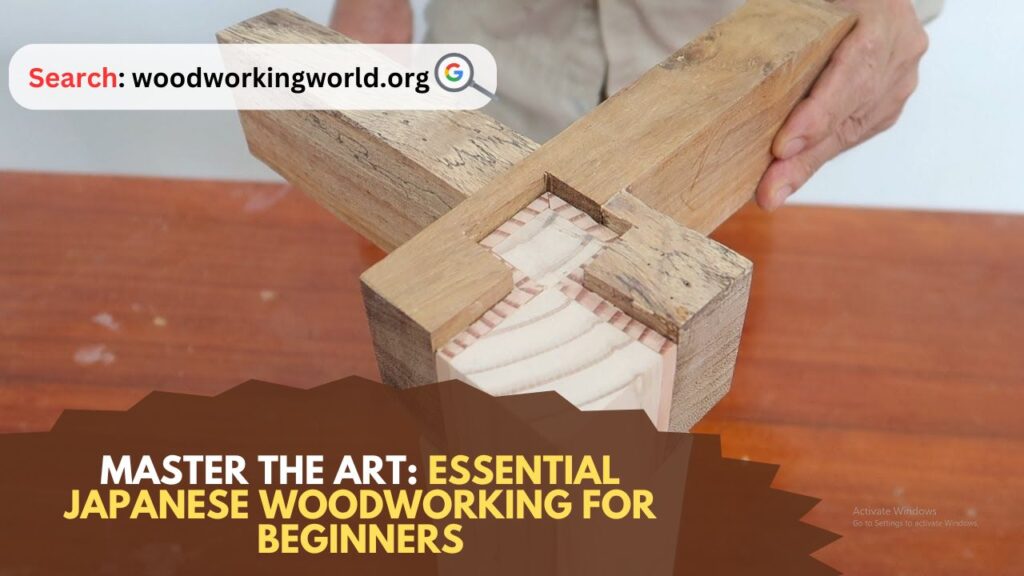Master the Art: Essential Japanese Woodworking for Beginners
Japanese Woodworking: Woodworking isn’t just a craft; it’s a tradition steeped in history, especially when it comes to the Japanese approach. Known for its precision, simplicity, and deep respect for nature, Japanese woodworking techniques have been perfected over generations.
If you’re new to woodworking and excited to start your journey, exploring these foundational Japanese techniques can be incredibly rewarding. Let’s dive into ten essential Japanese woodworking techniques that every beginner should know.

👉 Click here to unlock 16,000+ DIY woodworking plans now
Top 10 Japanese Woodworking Techniques
1. Kigoroshi (Precision Joinery)
In Japanese woodworking, joinery techniques rely on precisely interlocking pieces, avoiding nails or screws. Kigoroshi highlights this precision. Beginners can start with simple joints like mortise and tenon, then work their way up to more complex ones like dovetail joints. It’s all about achieving that perfect fit.
2. Sashimono (Joinery and Assembly)
Sashimono is the art of crafting and assembling wooden components, commonly used for furniture-making. Starting with small, functional items like boxes is a good practice. This technique hones your precision and attention to detail, laying the groundwork for larger projects down the road.
3. Rakishiki (Hand Planing)
Hand planing is a fundamental skill in Japanese woodworking, used to achieve smooth and even surfaces. Practice using traditional Japanese hand planes, or kanna, to understand how grain direction, pressure, and blade angle affect your work. Proper planing is crucial for preparing wood surfaces before assembly.
4. Kanna (Japanese Planes)
The kanna, or Japanese plane, is an iconic tool in woodworking. Familiarize yourself with different types of planes and their specific uses, and practice sharpening and adjusting the blade for the best performance. Mastering the kanna helps you achieve the fine, polished finishes that define Japanese woodworking.
5. Nomi (Chisels)
Chisels, or nomi, are essential tools in Japanese woodworking. Start with a basic set and learn proper techniques for sharpening, holding, and striking. Creating clean, precise cuts with chisels is key for joinery and detailed work.
6. Kiridashi (Marking Knife)
Accuracy starts with precise markings, and the kiridashi, a small marking knife, is the perfect tool for the job. Learn how to make accurate layout lines that guide your cuts. The kiridashi helps you achieve precision in both joinery and overall project execution.
7. Sumitsubo (Ink Pot)
The sumitsubo, a traditional ink pot, is used for marking straight lines on wood. Practice with this tool to create clean, consistent markings for accurate cuts and joinery. Mastering the sumitsubo is essential for achieving meticulous results in your projects.
8. Kumiko (Lattice Work)
Kumiko is a delicate technique involving intricate lattice patterns. Start with simple designs and gradually progress to more complex arrangements. This technique not only sharpens your woodworking skills but also adds an aesthetic touch to your projects, showcasing the beauty of Japanese craftsmanship.
9. Uzukuri (Surface Finishing)
Uzukuri, or surface finishing, enhances the natural beauty of wood grain. Practice using traditional Japanese finishing techniques like shou sugi ban (charred wood) or shi-sa-ji (coloring with natural pigments). Uzukuri not only elevates the look of your finished piece but also protects the wood.
10. Kanna Kikai (Power Planing Machine)
Though traditional hand tools form the backbone of Japanese woodworking, modern power tools like the kanna kikai (power planing machine) bring efficiency and precision. Beginners can explore how to integrate power tools into their workflow while maintaining respect for traditional techniques. This balance lets you work faster without sacrificing the essence of Japanese woodworking.
Conclusion: Japanese Woodworking
Embarking on a journey into Japanese woodworking is a path of both craftsmanship and artistry. The ten essential techniques outlined here lay the foundation for mastering this ancient craft. As you practice precision joinery, hand planing, and intricate detailing, you’ll not only acquire practical skills but also gain an appreciation for the harmony between nature and craftsmanship inherent in Japanese woodworking. With dedication and practice, you can unlock the secrets of this timeless tradition, creating pieces that reflect the elegance and precision of Japanese woodworking. Happy crafting!
I hope this article on Japanese Woodworking has been helpful. If you have any further questions, please feel free to leave a comment below.
👉 Click here to unlock 16,000+ DIY woodworking plans now
